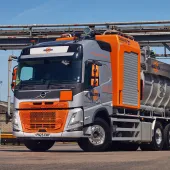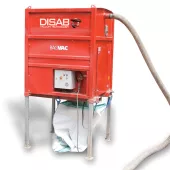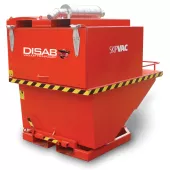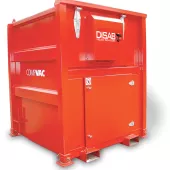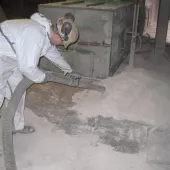Dealing with Dust
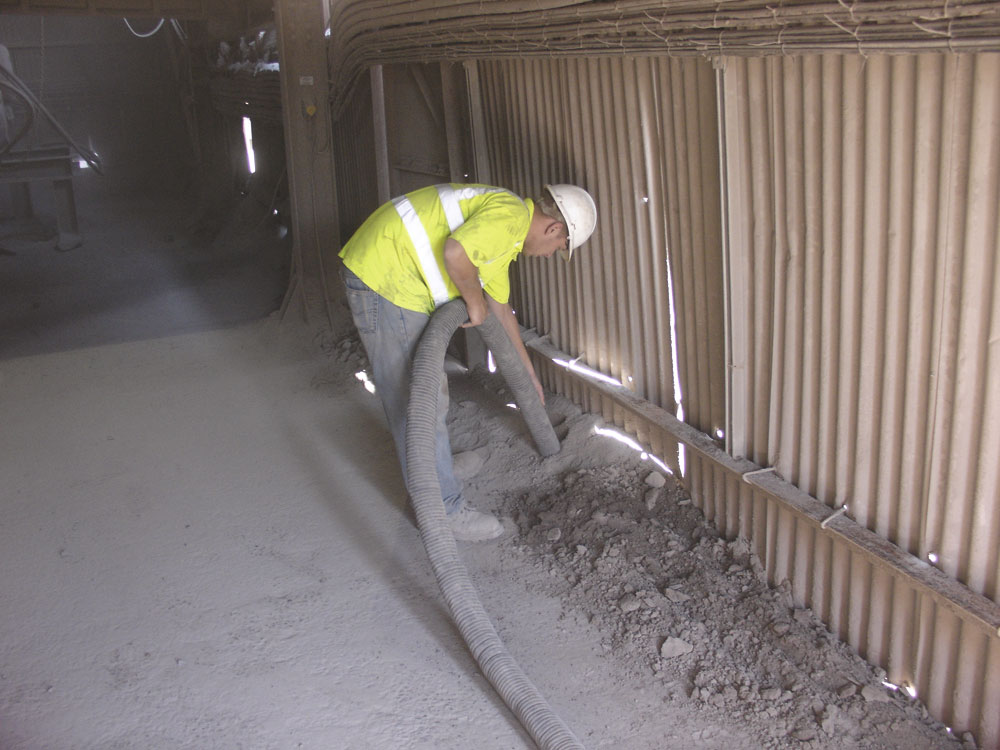
Wainwright improve screen house dust and debris removal using Swedish technology
One of the biggest operational challenges facing any quarrying company involves dealing with the dust and debris that inevitably arises from the continuous operation of screen houses and crushing plants. The removal of such material from around operating areas, machinery and moving equipment presents a constant challenge, and for a variety of different reasons.
One problem is the range of particle sizes, which can vary from dust up to scalpings of around 40mm. Removing dust and debris has traditionally involved the use of brooms and shovels, which is both inefficient and very time-consuming. In addition, airborne dust in crushing and screening plants can be a serious SHE threat to anyone working in this environment, especially if the stone being processed has a high silica content.
No matter how good housekeeping standards maybe, getting employees to clean-up the dust and debris that builds up day after day is a real management challenge, particularly when plant operators are faced with the back-breaking task of shovelling and sweeping. Moreover, back-related problems are a major source of employee absenteeism, so balancing the need for good housekeeping with the risk of potential absenteeism is yet another management dilemma.
John Wainwright & Co., a leading privately-owned quarrying company based in the West Country, have long been exponents of effective SHE policies throughout every aspect of their operations. The company are keen advocates of good housekeeping and were one of the first in the UK to realize the improvements in dust and debris removal that the application of some new Swedish technology could bring.
On a visit to Hillhead 2001, Wainwright quarry manager Kevin Sargant witnessed a live demonstration of the Gotland CompVac mobile suction unit. Impressed by the machine’s ability to suck up both dust and stones with ease via a length of flexible hose, he immediately saw a way of improving dust and debris control and removal back at the quarry.
During a subsequent demonstration of the machine, Wainwright’s managers and operational staff were equally impressed with the range of material the CompVac could shift, from piles of dust to 40mm diameter scalpings. The screen house operators were particularly enthusiastic about the CompVac, as they could see a significantly easier and much more effective way of cleaning up dust and debris build-up around the screen houses. As a result, the decision was made to buy two CompVac machines, one for fixed operation in one of the screen houses, and one for mobile use throughout the quarry.
For Wainwrights, the appeal of the CompVac lies in its simplicity, effectiveness and user-friendliness. The entire machine is contained within a rigid steel box frame, with easily accessible internals. A fork-lift truck is used to deliver it to the required location and power is supplied via a standard 32-amp, three-phase welding socket. The screen house operators decided where additional sockets would best be situated around the plant, to suit the way they wanted to use the CompVac.
The greatest strength of the CompVac, however, is the amount of usable power it provides, allowing a flexible hose up to 70m long to be used (comprising 20–30m of 100mm diameter hose, with an additional 40–50m of 50mm hose). This offers users great flexibility and the convenience of dust-free debris removal from places where a shovel or broom cannot reach. All the material collected is delivered into an internal 0.9m3 hopper, which can be discharged into an existing skip or container elsewhere on site, or back on to a conveyor belt for recycling.
‘There’s so much power and flexibility with the CompVac. We can get it to any point in the quarry whenever it’s required, so we don’t lose downtime with operators waiting around for equipment to be hired in,’ says Kevin Sargant. ‘Its range is impressive; it will deal with anything from dust to 40mm, wet or dry, which solves all sorts of other clearing-up tasks.
‘And using the hose, operators can get to all sorts of places a shovel simply can’t, and can deal with dust far more safely than a broom, especially in awkward places where someone has to reach above their head to get at the dust.’
Gotland say the concept behind their range of machines is to deliver the level of power and performance usually found in much bigger mounted suction equipment, in a smaller, easily moveable and more convenient package.
Powerful suction
‘The key to really efficient, consistently powerful suction is a really large filtration area,’ explains Gotland service engineer Alex Nicholas. ‘On a CompVac, we fit a filter assembly comprising a separator fitted with treated needle-felt filter cassettes, giving a total of 10m2 of filtration area.
‘The motor is an 18kW, 400V, 50Hz electrical motor, which is the most powerful unit that can be safely driven by a 32-amp, three-phase power supply. This directly drives a side-channel exhauster, which in turn delivers an air volume of 1,200m3, with a maximum operating vacuum of 400mbar.’
This power, combined with the extra-large filtration area, means that the CompVac is able to deliver consistently strong suction and performance, and because of the large filtration area, the dust and debris being removed does not reduce the filter efficiency significantly, allowing the air to continue moving at a constant speed. This contrasts with smaller machines where the air is forced at ever higher speeds through a reduced filtration area, the usual result of which is reduced suction.
The CompVac is also cheap to run, and because of its design the wear and tear on component parts is reduced significantly and maintenance is minimal. ‘After nearly four years of constant use, we’ve found the condition of the CompVacs to be as good as the day they were installed,’ comments Kevin Sargant. ‘The only thing we have to replace from time to time is the flexible hose, which because of its length inevitably gets damaged by being run over or trodden on.’
The CompVac’s resilience to dust is another factor that has impressed Mr Sargant: ‘The dust here has a high silica content. It’s incredibly fine, gets airborne very easily, and is very abrasive. It usually affects any equipment around the quarry that has moving parts. But not so with the CompVac — everything is self-contained and very well protected.’
Once on site, other dust and debris removal tasks were found for the CompVac to deal with, including the asphalt plant elevator. When it fails it leads to blockages in confined spaces where the temperature is around 180–200°C, and the stone and metalwork is dangerously hot. Now, instead of trying to remove hot debris manually, it is simply sucked out by the CompVac.
Virtuous circle
Wainwright’s managers say the investment in two CompVac machines has improved best practice with regard to good housekeeping. The CompVac is much more effective than brooms and shovels, and its user-friendliness is particularly appealing to the operators. They in turn are more motivated to keep their working environments cleaner and better maintained, which means they can see more easily where spillages are occurring, and can deal with them accordingly. And fewer spillages means less time spent cleaning up and more time for proper maintenance.
For Kevin Sargant, this is one of the biggest benefits of improving the housekeeping capabilities of his operators. ‘Instead of wasting significant time doing a lot of clearing up with inefficient brooms and shovels, the investment in the CompVacs has enabled us to develop a virtuous circle of continuous improvement,’ he says.
Wainwright’s managers are now incorporating the CompVac’s capabilities into their plans for the future, and a new version of the CompVac — the BagVac — with a larger removable bag slung underneath the CompVac unit in place of the fixed internal hopper, is being considered.


